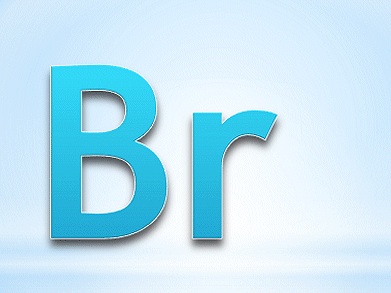To date, 118 chemical elements have been found. Professor Mario Markus, Max Planck Institute for Molecular Physiology, Dortmund, Germany, takes a look at each element, presenting a poem based on its natural properties along with a scientific overview of each element.
All 118 poems – as well as some poems about elements that only exist in theoretical simulations – are published in the book Chemical Poems: One On Each Element by Mario Markus. ChemViews magazine will publish a selection of these poems over the next months.
Bromine |
Bromine |
|
|
Viscous, dark red, volatile, foul-smelling non-metal. Besides mercury, it is the only element that is liquid at room temperature. Density: 3.1 g/cm³. Its name comes from bromos, stench in Greek. It was discovered by the Frenchman Antoine-Jérôme Balard in 1826. Bromine is very reactive: it attacks and disolves gold; burns aluminum, titanium, and mercury; explodes with white phosphorus and potassium. Paradoxically, however, it can also be used as an inhibitor against the burning of clothes, furniture, and electronic items [1]. Exposure to its vapors reduces sexual activity [2]. This was first noted when it became a complaint in workers who inhaled excess bromine in factories where it was made. Bromine is concentrated in marine snails with spiral shells of the genus Murex. A purple dye, which is a compound of bromine, can be extracted from these snails. This dye is mentioned in the Bible, for example, in the Second Book of Moses and the Book of Ezekiel, and was used for coloring the robes of Roman emperors [3]. Belousov and Zhabotinsky discovered an oscillating chemical reaction in the Soviet Union in the 1950s. The oscillations occur via reactions of bromine compounds in the following manner. In an “eruptive” or “autocatalytic” reaction, bromous acid increases by the fact that the number of molecules doubles in each reaction step. This increase in bromous acid causes oxidation of the ion Br+2 (red) to Br+3 (blue), the latter generating bromide. Bromide then consumes the bromous acid and thus stops the “eruption”. Thereafter the process restarts, as small amounts of bromous acid, which is produced by a pool of bromate, increase eruptively again [4]. If the solution is not stirred, blue spiral or concentric waves appear on a red background [5]. [1] J. Green, J. Fire Sci. 1996, 14, 426–442. DOI: 10.1177/073490419601400602 |
The spiral of the snail.
|
Professor Mario Markus, Max Planck Institute for Molecular Physiology, Dortmund, Germany.
www.mariomarkus.com
Chemical Poems – One On Each Element,
Mario Markus,
Dos Madres Press 2013.
ISBN: 978-1-933675-98-5
Perfectbound, 308 pages, English, $30

Interview with Mario Markus: Poetry and Chemistry,
ChemistryViews 2013.
https://doi.org/10.1002/chemv.201300010
The poems have also been published in German in:
- Chemische Gedichte,
Mario Markus,
Shaker Media, Herzogenrath, Germany, 2011.
ISBN: 978-3868587012
See all poems published so far by ChemistryViews.org





